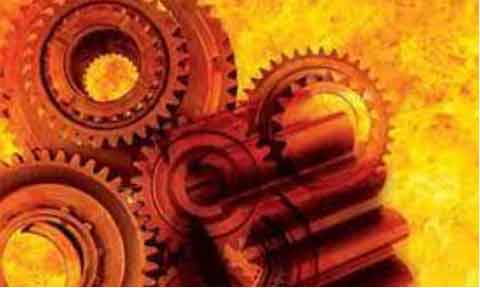Heat treatment plays a vital role in the manufacturing of metal components, enhancing their mechanical properties and performance. However, heat treatment can introduce various defects that can compromise the quality and functionality of the finished product. Identifying and resolving heat treatment defects is crucial for ensuring the reliability and performance of heat-treated components. This guide provides an overview of common heat treatment defects, along with guidance on how to identify and resolve them effectively.

1.Decarburization:
- Identification: Look for a loss of carbon content at the surface of the heat-treated component, which may appear as a dull or grayish layer.
- Resolution: Use controlled atmospheres or protective coatings during heat treatment to prevent excessive exposure to oxygen. Adjust process parameters, such as temperature and atmosphere composition, to minimize decarburization.
2.Distortion:
- Identification: Distortion can manifest as changes in shape, warping, or unevenness in the dimensions of the heat-treated component.
- Resolution: Optimize fixturing and design to promote uniform heating and cooling. Implement appropriate quenching methods, such as controlled cooling rates or the use of quenching media, to minimize distortion. Consider stress-relieving techniques after heat treatment to alleviate residual stresses that contribute to distortion.
3.Quench Cracking:
- Identification: Quench cracking appears as cracks on the surface or within the heat-treated component, typically occurring during the rapid cooling phase.
- Resolution: Select appropriate quenching media and methods based on the material and component geometry. Preheat the material to reduce temperature differentials during quenching. Employ tempering or stress-relieving processes to relieve residual stresses that contribute to quench cracking.
4.Grain Growth:
- Identification: Excessive grain growth is characterized by larger grains visible on the surface or in microstructural analysis after heat treatment.
- Resolution: Control heating and cooling rates to minimize the time spent at high temperatures. Utilize appropriate quenching methods to rapidly cool the material and prevent excessive grain growth. Consider the use of grain growth inhibitors or alloying elements to control grain growth.
5.Surface Oxidation:
- Identification: Surface oxidation appears as a layer of oxide or discoloration on the surface of the heat-treated component.
- Resolution: Utilize controlled atmospheres, such as inert gases or reducing atmospheres, to minimize oxidation during heat treatment. Ensure thorough cleaning of the material surface before heat treatment to remove contaminants. Implement proper packaging and handling techniques to protect the material from exposure to air.
6.Soft Spots:
- Identification: Soft spots are localized areas of reduced hardness or inadequate heat treatment, often detected through hardness testing.
- Resolution: Ensure uniform heating and consistent soaking time throughout the material. Monitor and control the temperature within the specified range to achieve the desired hardness. Perform hardness testing and quality inspections to identify and rectify any soft spots.
7.Cracking due to Residual Stresses:
- Identification: Cracks caused by residual stresses can appear on the surface or within the heat-treated component, especially after subsequent machining or use.
- Resolution: Optimize the heat treatment process to minimize the introduction of residual stresses. Implement stress-relieving techniques, such as annealing or tempering, to relieve residual stresses. Consider machining or stress relief operations after heat treatment to minimize the risk of cracking.
8.Incomplete Heat Treatment:
- Identification: Incomplete heat treatment is characterized by inadequate hardness, insufficient material properties, or unsatisfactory microstructure.
- Resolution: Review and adjust the heat treatment parameters, including temperature, time, and cooling rates, to ensure complete and uniform transformation of the material. Implement appropriate process controls and quality assurance measures to confirm the achievement of desired material properties.
Identifying and resolving heat treatment defects is essential for ensuring the quality and reliability of heat-treated components. By understanding the common heat treatment defects and following the guidance provided, manufacturers can effectively identify, prevent, and resolve these defects. Continuous monitoring, process improvement, and adherence to industry standards and best practices contribute to the production of high-quality heat-treated components.
